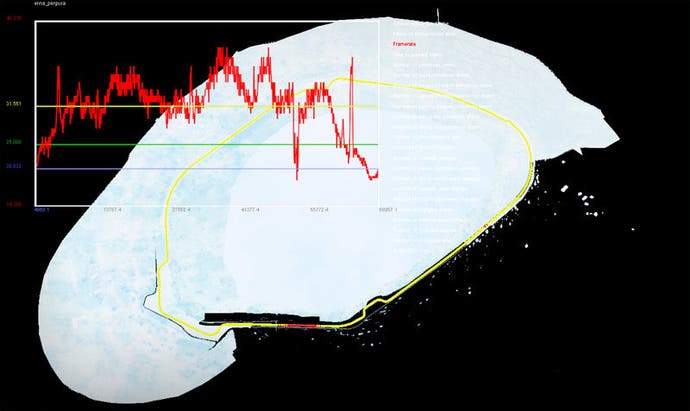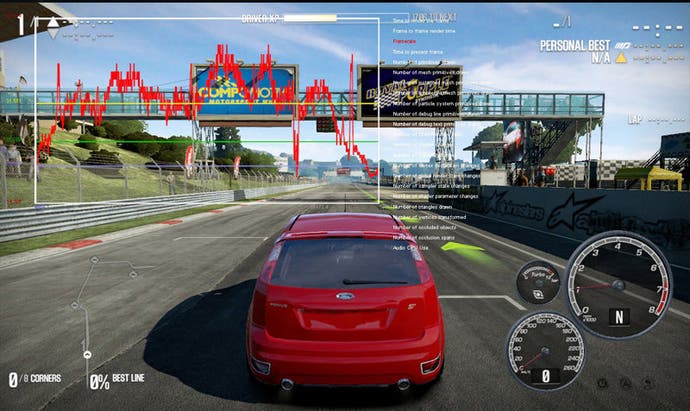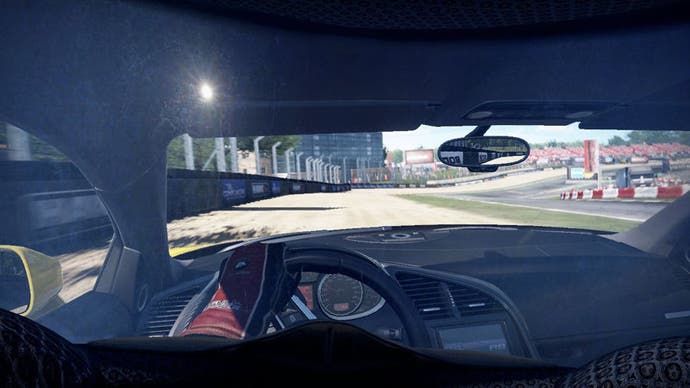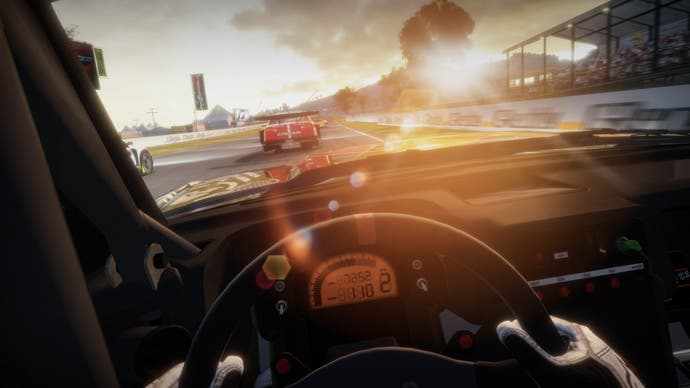The Making of Shift 2 Unleashed
How to pull a double shift.
Some of the community describe Shift as a GT/Forza-style game but with more of an arcade edge and a much more pronounced sense of speed and excitement. Andy Tudor has a different take. He describes Forza and GT as having a "sterile, elitist nature" and considers that Shift perhaps has more in common with the Project Gotham Racing games in terms of what the player gets out of the experience.
"They're after a kickass racing experience they can play with their friends that is fresh and contemporary but moves into a more authentic area - that's Shift," he says, zeroing in on features like the star system which rewards you for completing in-race objectives and the XP mechanism that gives you something to play for even if you're going to win the race.
"In direct comparison to Forza/GT, yes of course these will look like 'arcade gimmicks' but without them you would have a very dry experience - one that simply provided races to enter and money to win. And, unfortunately, that's what players have been accustomed to in those titles," Tudor says, before going on to explain that, regardless, the sim element of Shift is still extremely competitive.
"When it came to the on-track experience we very consciously provided all the hooks, dials, sliders and modes to allow you to customise the difficulty and handling to your driving style since we knew that both the core Need for Speed community (who were used to a more 'arcade action' experience), and the 'sim' players needed to have that accessibility."


Indeed, Shift 2 kicks off with a mini-race that evaluates your skill as a driver and attempts to set up the game to be as satisfying for the player as possible based on how they approached the game.
"Out of the box we evaluated you with a test lap to aid you in the decision-making process but throughout you could tweak and tailor it how you wanted. So if you wanted a more 'sim-like' experience the tools were all provided but equally your 12-year-old nephew could get enjoyment out of it opening it on Christmas Day.
"The actual raw feeling of driving wasn't weighted one way or another though. It's an emotional simulation of the feeling of racing a car at high speed," Tudor explains, refuting outright that the integrity of Shift has been compromised as a result of this approach.
"At the core it has a detailed mathematical simulation of the physics forces involved, and layered on top it has the first-hand expertise and knowledge we get from real-world drivers and our own track-day experience. There's no deliberate decision to 'dumb it down' here at all - the maths are accurate and the emotion is authentic. If it feels raw and fast and fun when racing then you have to question why you feel other titles are 'more realistic' when every tool we have at our disposal is saying otherwise."
Another clear differential between Shift and its competitors is the use of the cockpit view, revised and improved with the addition of the helmet cam in the sequel. Slightly Mad admits that its take-up faces some serious challenges. Some games don't have a cockpit view, others only implement it on some cars, not all, while in all cases there are functionality issues. People use chase-cam because of the expansive view, or the bumper angle to get a better sense of speed. Existing cockpit views often comes across as fancy window-dressing on what is an inherently limited view of the world.
"We used a variety of techniques to overcome these issues. The first was to allow you to look around the cockpit. We were crafting each one individually and the car artists were putting a ton of detail into them. With the lighting effects and variety of materials in use and the animations of the driver, this was a no-brainer to showcase this attention to detail. It also gave you freedom from being locked into that blinkered widescreen view - you didn't feel as constrained any more," Tudor explains.
The main camera was then tied into the physics to make acceleration and braking a part of the viewpoint, giving a dynamic sense to the available view which grows and shrinks according to the G-forces. On top of that additional visual effects were deployed - at high speeds, the cockpit blurs and the focus of the scene shifts to what is outside the windshield - which Tudor equates to the iron sights effect in Call of Duty.
To extend the parallel, the vicious sense of impact in a high-speed crash is likened to a grenade going off, de-saturating the screen and blurring the edges.
"The overall effect was one where the player's perspective was constantly changing, representative of both the physical and emotional experience you have when sat in the driver's seat," he says.


Shift 2's helmet cam takes that a step further, tying in perfectly with the "X" - the emphasis on the driver experience - that underpins the game.
"By attaching the camera to the driver's head rather than their body we were able to achieve an even more authentic and immersive perspective on the action - one that now leaned laterally when approaching corners and tilted to counter-balance camber," Tudor explains.
"We also used depth of field effects to draw attention to the apex of the corner so it became a great learning tool too. If cockpit cam was akin to a first-person shooter then this was pulling inspiration from flight sims. Since the camera is now adjusting when approaching corners we also had to do careful balancing so that it felt natural and was complementing where your natural eye-line was going."
Initial tests were promising but clearly required refinement. Tudor describes the sensation as akin to driving a tank in a straight line while the turret is rotating. Other effects added to the tech, such as the reflections from the helmet visor, were also removed as, while physically accurate, they detracted from the fun and proved distracting to the player.
"A set of simple parameters allowed us to tweak the settings rapidly and allowed the team to iteratively re-test - we nailed the behaviour fairly early on in the project," he concludes.








